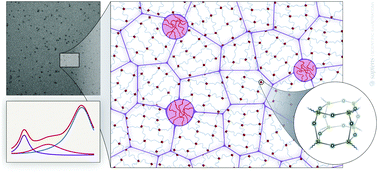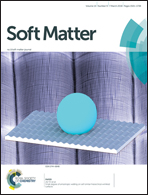Solvent-free and biocompatible multiphased organic–inorganic hybrid nanocomposites†
Abstract
Biocompatible chemically cross-linked organic–inorganic (O–I) hybrid nanocomposites were developed using a new atoxic, simple and fast, solvent-free pathway. Poly(ε-caprolactone) (PCL) and poly(ethylene glycol) (PEG), which are both biocompatible, were used as the organic moieties (at different PCL/PEG ratios), while in situ synthesized polysilsesquioxanes made up the inorganic moiety. The O–I hybrid nanocomposites’ molecular structures were characterized using solid-state 29Si NMR, TGA and ATR-IR. Results showed an unusually high condensation yield of approximately 90% and two distinct silsesquioxane structures. No traces of the remaining isocyanate groups were found. Advanced morphological characterization of the ternary O–I hybrids was performed using a combination of electron microscopy and X-ray scattering techniques such as SEM, TEM, ESI-TEM, WAXS and temperature-dependent SAXS. Results showed the occurrence of spherical nanoparticles, associated with polysilsesquioxane, and ordered network grains, associated with PCL and/or PEG chains cross-linked by silsesquioxane cages. As a consequence, a four-phased nanostructured morphology was proposed. In this model, PCL and PEG are undistinguishable, while polysilsesquioxane nanoparticles are uniformly distributed throughout a homogeneous cross-linked matrix, which shows gel-like behavior. Moreover, a mobile phase made up of unbound polymer chains occurs at the grain interface.



 Please wait while we load your content...
Please wait while we load your content...